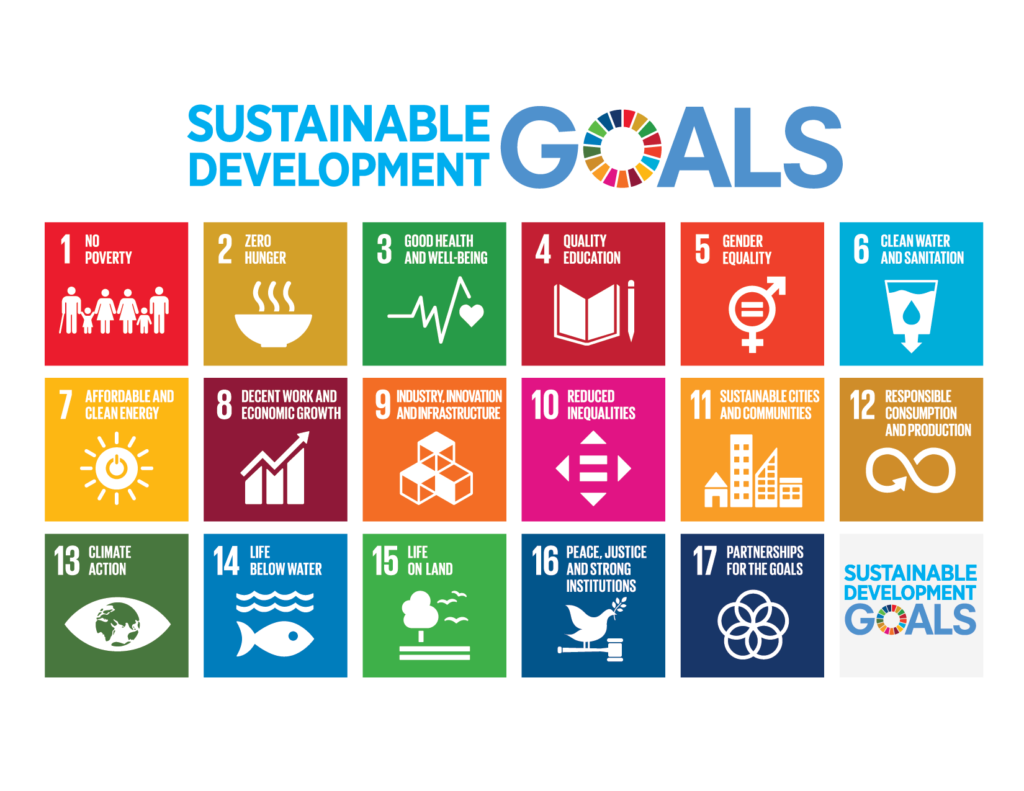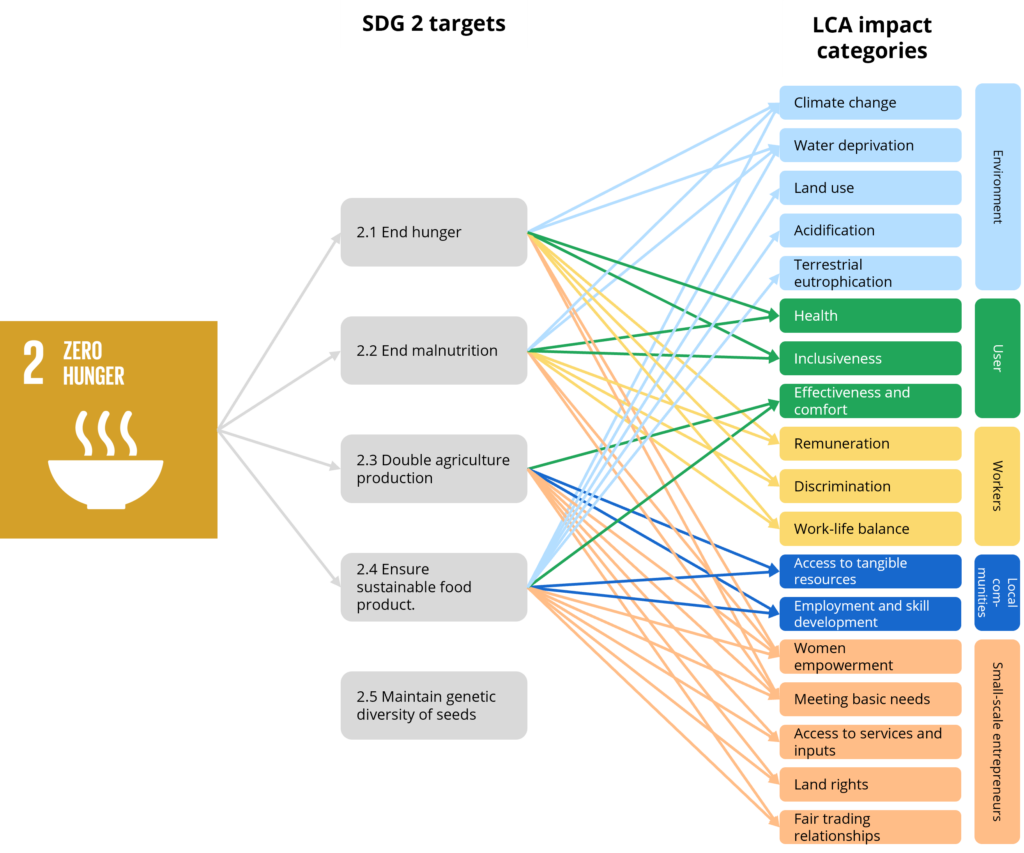How companies can assess their contribution to the UN Sustainable Development Goals
The UN Sustainable Development Goals (SDGs) have captured the imagination of not just the governing bodies they were aimed at, but also of companies and consumers. To meet the growing interest from companies to show their contribution to the SDGs and communicate this to their customers, employees and investors, the UNEP Life Cycle Initiative commenced a project in which PRé and other partners created methodologies to link the SDGs to life cycle assessment (LCA). This allows companies to reliably measure their contributions and impacts and report on specific SDGs. In this article, we will mostly discuss PRé’s approach.
Specific goals covering a complex blueprint
The UN Sustainable Development Goals were created based on the 2030 Agenda for Sustainable Development, adopted by all UN Member States in 2015. The aim of the Agenda is to provide a blueprint for peace and prosperity for people and the planet, now and in the future. This complex topic was broken down into the 17 SDGs, essential for the sustainable development of our world moving forward. Each of the SDGs has its own targets and indicators.
Consumers, employees and investors are calling for companies to show their impact on global goals like the SDGs and net zero carbon emissions by 2050. But translating those policy-related goals to business activity is not easy. How can we know that our individual actions are contributing to these sustainability topics? How do we know the impact of our purchasing choices on important topics like clean water, gender equality, climate action and more? How can we know how our company contributes to clean energy, poverty and life below water?
Claiming a contribution should be substantiated and standardized in a similar way to certification schemes. This was the challenge of the UNEP project “Linking the UN Sustainable Development Goals to life cycle impact pathway frameworks”: creating robust links between the SDGs and LCA results on a product/service level, for measurement and reporting purposes.

Linking LCA to the SDGs to make your contribution measurable
PRé’s methodology linking LCA results to the SDGs was developed and tested over a 3-year period and follows the basic LCA approach: goal and scope, inventory analysis, impact assessment and interpretation. In the goal and scope phase, companies choose the SDGs they want to assess. This allows them to understand how they contribute to that goal, to monitor and increase their positive contribution over time, and to communicate about their contribution. The data is gathered in the inventory analysis phase, and the results calculated in the assessment phase.
After a round of justification and two internal review rounds at PRé, our approach now links environmental and social LCA impact categories to the SDGs on a target level. Each link is characterized on a 5-point reference scale (from -2 to +2) and given a score on a scoring matrix. In a final step, relative importance can be assigned: comparing how important each impact category is with insights from the methodology developed by our partners at 2.0-LCA Consultants. Each target is then assessed where both the most negative and positive contributions should be included in the goal-level result.
The final step in the methodology is the interpretation stage, which answers how the results relate to the stated goal, how they can be communicated and if the study had any limitations.
The method was applied to three case study companies. On the one hand, this helped us to address shortfalls and learn from their feedback to make further improvements. On the other hand, this exercise provided the companies with relevant insights about their SDG contribution on product level.

Is LCA able to cover the SDGs, and the other way around?
By creating a heatmap of all the links made between impact categories and SDGs, we were able to see how well LCA covered the SDGs and vice versa. In summary: some goals were better covered than others, and some LCA impact categories are not given as much attention as the LCA community thinks they should. This might affect which goals are possible to contribute to.
In general, the SDGs have a strong social focus. Most goals and targets relate strongly to social impact categories and fewer goals relate to environmental topics. This suggests the importance of effective social systems in forwarding the sustainability agenda and perhaps the focus of the SDGs on human quality of life and societal/governance systems.
Goal 1: No Poverty, goal 3: Good Health and Wellbeing, goal 6: Clean Water and goal 15: Life on Land are well covered by social and/or environmental LCA categories. Goal 5: Gender Equality, goal 10: Reduced Inequalities, goal 13: Climate Action, goal 16: Peace & Justice and goal 17: Partnership for the Goals are not covered well. This points to the weakness of LCA in assessing more systemic problems such as inequality and the effectiveness of legal systems. Systemic issues such as these are usually the responsibility of governing bodies and therefore outside of a company’s direct influence. Goals associated with achieving sustainable cities and communities, for example, are out of scope of product-level LCA results.
The LCA impact categories of climate change, water deprivation, skills development and providing a basic livelihood are essential topics for the SDGs. Therefore, contributing to any of these topics positively affects many SDGs. It is also important to include many different stakeholder groups in an analysis, to prevent skewing the picture of a company’s impact. For instance, the social LCA categories of remuneration, meeting basic needs and contribution to economic development have a large influence on the livelihood of a wide range of stakeholders. Access to material and immaterial resources and access to services and inputs are shown as highly influential topics affecting small-scale entrepreneurs and local communities, in particular, as it contributes to the SDGs.
Goal 12: Responsible Consumption and Production, is the only goal linked to mineral and fossil resource use, indicating these topics are not covered well by the SDGs. Privacy as a topic described within social LCA in not covered by any of the SDG targets, even though this topic has gained a lot of traction within the topics of data protection and data rights in current affairs.
Interested in linking your products to the SDGs?
We are proud to be able to contribute to this promising method. If you are interested in applying the methodology, you can find out more on the UNEP Life Cycle Initiative website.
Does your company have LCA results and would you like to know your contribution to the SDGs? Would you like some help applying the UNEP methodology? Or would you like to explore possibilities with developing a digital tool that incorporates this method? Contact us or find out here how PRé can help your organization.
Shaniq Pillay
Expert
Coming from the Global South has given me unique exposure to sustainability as an enabler for development and its complex interactions with environmental and economic progress. I think it is our duty as sustainability professionals to ensure that the decisions consumers and companies make are well-informed and account for their social and environmental implications throughout the supply chain.